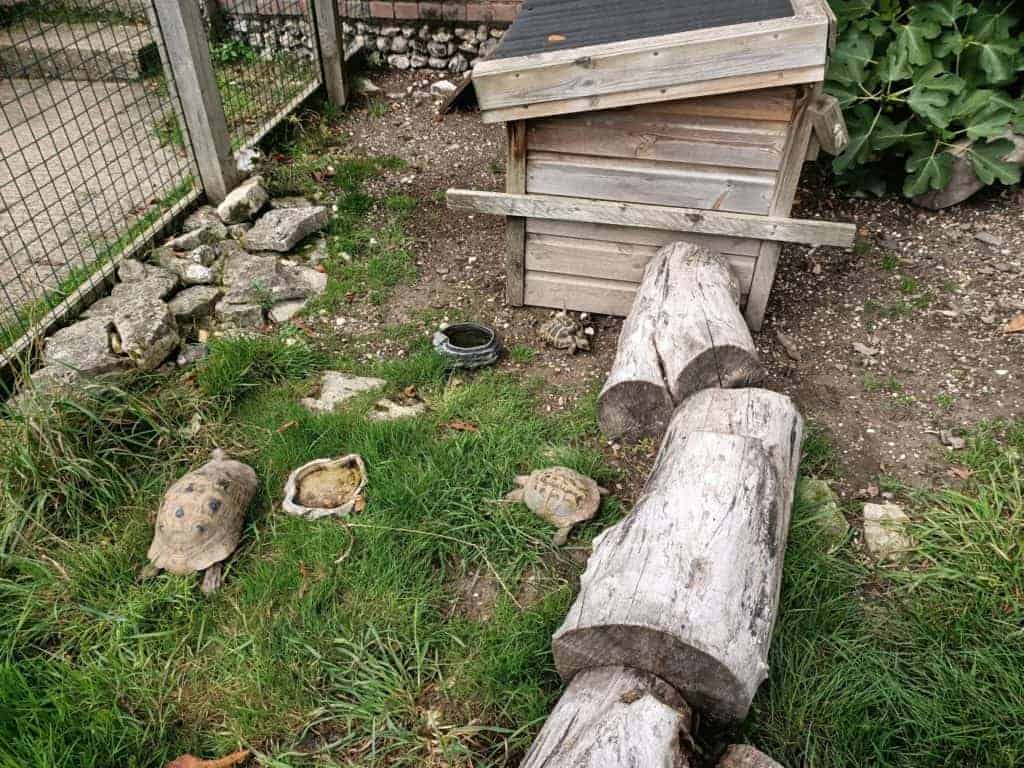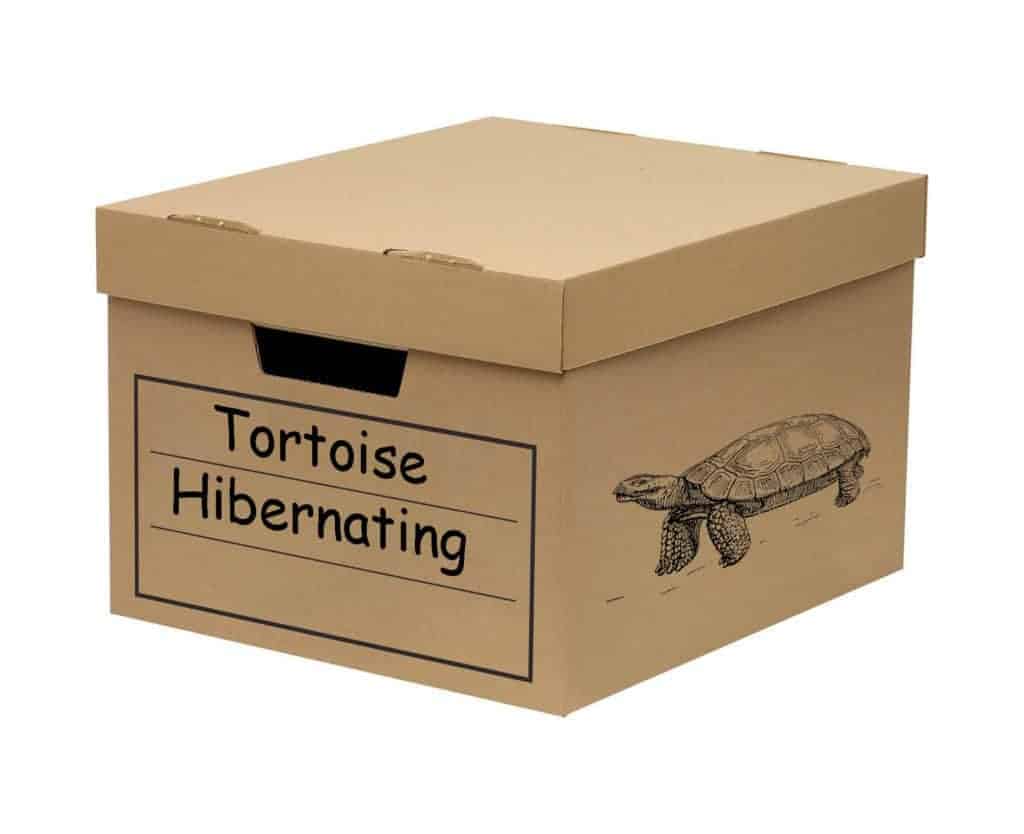
Putting your tortoise into hibernation can be a nerve racking process. I myself have suffered tragedy in this area, when my first pet tortoise unfortunately awoke prematurely and subsequently died.
Needless to say, you can’t be too careful when preparing and undertaking the hibernation process, but there’s no reason to be fearful about it. In my case distraction and naivety played a big part as to why my tortoise perished, so being well informed and on the ball are absolutely imperative to avoid making dangerous mistakes.

As for whether or not your tortoise can hibernate in your yard or garden. The answer is certainly that yes they can. After all wild tortoises construct their own burrows for hibernation in some pretty unforgiving conditions, so there is no reason why similar if not better conditions can’t be provided in the backyard.
Having said that, wild tortoises face a great many risks in life, whether in the form of predators, lack of food, or extremes of temperature, so their lives aren’t necessarily the best example to follow if you want to have a healthy and long lived pet tortoise.
Maintaining Temperature
The biggest concern when hibernating a tortoise in any environment is maintaining a consistent temperature. Too high and the tortoise will wake up, too low and their basic metabolic functions won’t be able to keep ticking over. Both have the potential to lead to death.
Hibernation of course takes place during the late fall and into winter when temperatures are lower in non tropical parts of the world. If you live in a tropical region and have a tortoise that requires hibernation, then you stand little chance of doing so ‘naturally’ in the backyard, as temperatures will not stay consistently low enough. You would instead need to simulate colder conditions, likely by placing your tortoise into a specially adapted refrigerator.
If you live in a non tropical region then the ability to hibernate your tortoise outdoors depends solely on how consistent you are able to keep the ambient temperatures outdoors.
Given that tortoises typically dig a burrow or find a convenient rocky crevice to hibernate in means they are able to get out of the sun, and away from frosts and the temperature fluctuations that occur throughout the day.
The same effect is typically achieved domestically by placing your tortoise in a cool dark area of the home, often in an insulated cardboard box in the garage. Garages are typically not heated, therefore the result is similar to being in a natural burrow.
Hibernating Your Tortoise in The Yard (Semi Naturally)
Hibernating your tortoise in the yard won’t usually simply be a case of leaving them to it in their standard enclosure, unless of course it features a cool dark area, preferably below ground where temperatures are lower and unaffected by sunlight.
Instead you’ll need to provide the conditions required. Ideally this will involve providing a very similar setup as you would in a garage. So if you have a shed, or other similar structure that is cool, dry, and impenetrable by water and sunlight, then you have a good candidate for a hibernation area.

You should still place your tortoise in an intermediate container, such as a cardboard or plastic box, with bedding/insulation. Most critically of all you should have some means of monitoring temperature whilst your tortoise hibernates.
Typically a digital thermometer with a probe is placed in the box containing the tortoise, which will need a mains power supply. Again if you have one, this is easily done in your garage where access to a mains socket is much more likely.
Hibernating Your Tortoise in the Yard (Completely Naturally)
Some tortoises, particularly those retrieved from the wild at an older age may be adept at hibernating themselves naturally; that is to say they will dig their own burrow and hibernate just as they would in the wild.
There is of course no reason why this isn’t possible, however you should be certain of a few of prior to doing so:
- That the tortoise is not hibernating in an area that is likely to be flooded. This is of the utmost importance because the tortoise will be below ground, so even flooding just below surface level could be an issue.
- That the tortoise burrow (whether self made or with your assistance) is sufficiently deep enough that frosts are not able to penetrate into the soil. This is pretty simply to achieve because frosts do no tend to penetrate further than a few inches below surface level
- Monitoring and checking on the tortoise is likely to be more difficult or even impossible under these conditions
- That the tortoise is not vulnerable to attack from predators such as foxes. Thus the natural burrow should still be contained within a fenced off and roofed enclosure
You should also carry out/have a vet carry out a full health check of the tortoise prior to this type of hibernation; and most critically that they are of a healthy weight to be able to withstand hibernation. Again you will be less able to carry out intermediate checks during hibernation, so being sure they are healthy prior to doing so is very important.
I have personally known of someone who more or less ‘leave their tortoise to it’ outdoors all year round, including hibernation, so it certainly can be done. I wouldn’t attempt it, because I don’t like the idea of not being able to check on my tortoise, but you can almost be guided by your tortoise in some respects. If you find they dig their own burrow in the fall, and start to eat less, then that’s a sure sign they are preparing for hibernation using their own instincts.

